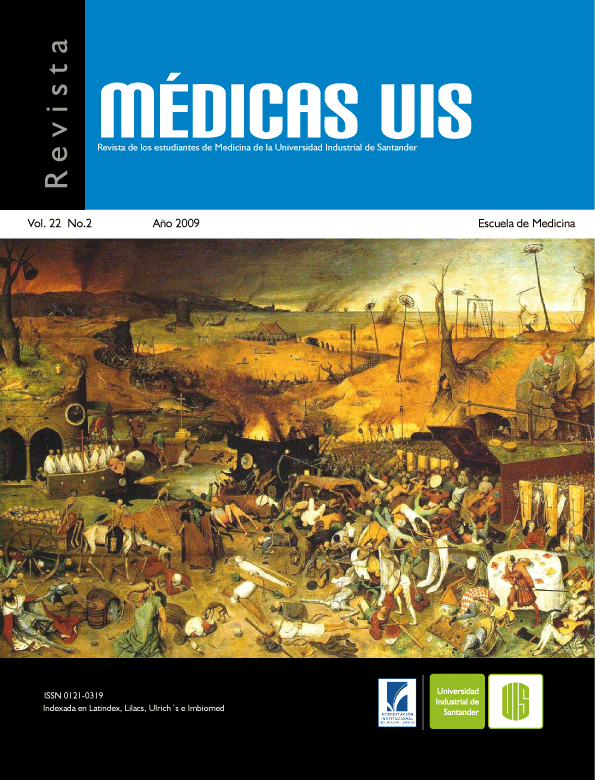Resumen
El carvedilol es un agente betabloqueante ampliamente utilizado en el tratamiento de la insufciencia cardiaca. Numerosos estudios randomizados y controlados han demostrado su efcacia, seguridad y hasta su superioridad sobre otros betabloqueantes tradicionales como el el metoprolol. Sin embargo su uso en la hipertensión arterial curiosamente cuenta con menor nivel y calidad de evidencia científca que en la insufciencia cardiaca. En la presente revisión se consideran aspectos farmacocinéticos, farmacodinámicos y hemodinámicos de los betabloqueantes tradicionales en comparación con el carvedilol. Asimismo, se analiza la evidencia disponible sobre los efectos de este grupo farmacológico respecto del impacto en órganos blanco y su efecto sobre la morbimortalidad cardiovascular.
Palabras clave: Hipertensión. Carvedilol. Betabloqueantes.
Referencias
2. Morgan T. Clinical pharmacokinetics and pharmacodynamics of carvedilol. Clin Pharmacokinet 1994;26:335-46.
3. Bartsch W, Sponer G, Strein K, Muller-Beckmann B, von Mollendorf E, Abshagen U. Pharmakologie und klinische pharmakologie des neuen vasodila tierenden beta-rezeptoren blockers BM 14190. Therapiewoche 1982;32:5714.
4. Dunn CJ, Lea AP, Wagstaff AJ. Carvedilol: a reappraisal of its pharmacological properties and therapeutic use in cardiovascular disorders. Drugs 1997;54:161-85.
5. Nichols AJ, Gellai M, Ruffolo RR Jr. Studies on the mechanism of arterial vasodilation produced by the novel antihypertensive agent, carvedilol. Fundam Clin Pharmacol 1991;5:25-38.
6. Louis WJ, McNeil JJ, Workman BS, Drummer OH, Conway EL. A pharmacokinetic study of carvedilol (BM 14.190) in elderly subjects: preliminary report. J Cardiovasc Pharmacol 1987;10: Suppl 11:S89-S93.
7. Neugebauer G, Akpan W, von Mollendorff E, Neubert P, Reiff K. Pharmacokinetics and disposition of carvedilol in humans. J Cardiovasc Pharmacol 1987; 10: Suppl 11:S85-S8.
8. Fujimaki M, Murakoshi Y, Hakusui H. Assay and disposition of carvedilol enantiomers in humans and monkeys: evidence of stereoselective presystemic metabolism. J Pharm Sci 1990;79:568-72.
9. Fujimaki M. Oxidation of the R(+)- and S(¡)-carvedilol by rat liver microsomes: evidence for stereoselective oxidation and characterization of the cytochrome P450 isozymes involved. Drug Metab Dispos 1994;22:700-8.
10. Neugebauer G, Gabor M, Reiff K. Pharmacokinetics and bioavailability of carvedilol in patients with liver cirrhosis. Drugs 1988;36:Suppl6:148-54.
11. Kramer BK, Ress KM, Erley CM, Risler T. Pharmacokinetic and blood pressure effects of carvedilol in patients with chronic renal failure. Eur J Clin Pharmacol 1992;43:85-8.
12. Miki S, Masumura H, Kaifu Y, Yuasa S. Pharmacokinetics and efficacy of carvedilol in chronic hemodialysis patients with hypertension. J Cardiovasc Pharmacol 1991;18:Suppl4:S62-S68.
13. Frohlich ED, Tarazi RC, Dustan HP. Re-examination of the hemodynamics of hypertension. Am J Med Sci 1969;257:9-23.
14. Messerli FH, Sundgaard-Riise K, Ventura HO, Dunn FG, Glade LB, Frohlich ED. Essential hypertension in the elderlyhaemodynamics, intravascular volume, plasma renin activity, and circulating catecholamine levels. Lancet 1983;2:983-6.
15. Lund-Johansen P. Hemodynamic patterns of untreated hypertensive disease. In: LaraghJH, editors. Hypertension: Pathophysiology, Diagnosis, and Management (Two-Volume Set) New York: Raven Press, 1995. p. 323-42.
